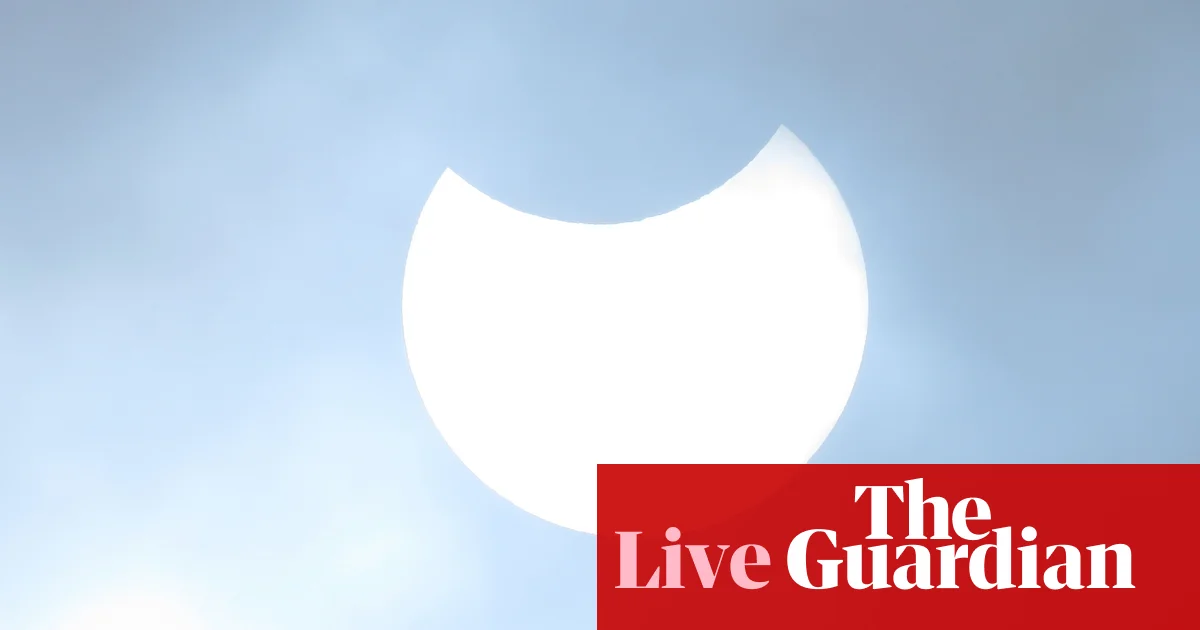Show key events only
Please turn on JavaScript to use this feature
Show key events only
Please turn on JavaScript to use this feature
A warning for those of you planning to watch the eclipse outdoors rather than online (crazy, I know) :
Looking straight at the Sun – during an eclipse or otherwise – can lead to irreversible vision loss.
Sky-gazers are advised to buy eclipse-viewing glasses and ensure they are in good condition.
Even a slight defect or “microscopic hole” can cause eye damage, the Paris Observatory warned.

Nicola Davis
A partial solar eclipse occurs when the moon passes between the Earth and the sun, partially blocking out the sun’s light. By contrast, in a total solar eclipse the moon completely blocks the sun’s light.
“These eclipses, whether they be partial or total, it is effectively watching the clockwork of the solar system in action,” said the Royal Observatory astronomer Jake Foster.

A partial solar eclipse will be visible across the northern hemisphere. Photograph: Geoffrey Swaine/REX/Shutterstock
Sky-gazers across a broad swathe of the northern hemisphere will have a chance to see the moon take a bite out of the sun today when a partial solar eclipse sweeps from eastern Canada to Siberia.
The partial eclipse, which is the first of the year and the 17th this century, will last around four hours from 8.50am GMT to 12.43pm GMT.
Curious observers making sure to protect their eyes might be able to see the celestial show in most of Europe, as well as in some areas of northeastern North America and northwest Africa.
Eclipses occur when the sun, moon and Earth all line up. When they perfectly align for a total solar eclipse, the moon fully blots out the sun’s disc, creating an eerie twilight here on Earth.
But that will not happen during Saturday’s partial eclipse, which will instead turn the Sun into a crescent.
“The alignment is not perfect enough for the cone of shadow to touch the Earth’s surface,” Paris Observatory astronomer Florent Deleflie told the AFP news agency.
Because that shadow will “remain in space, there will not be a total eclipse anywhere” on Earth, he said.
At most, the Moon will cover around 90 percent of the Sun’s disc. The best view will be from northeastern Canada and Greenland at the peak time of 10.47 GMT.
We’ll have a live stream for you to watch shortly…
